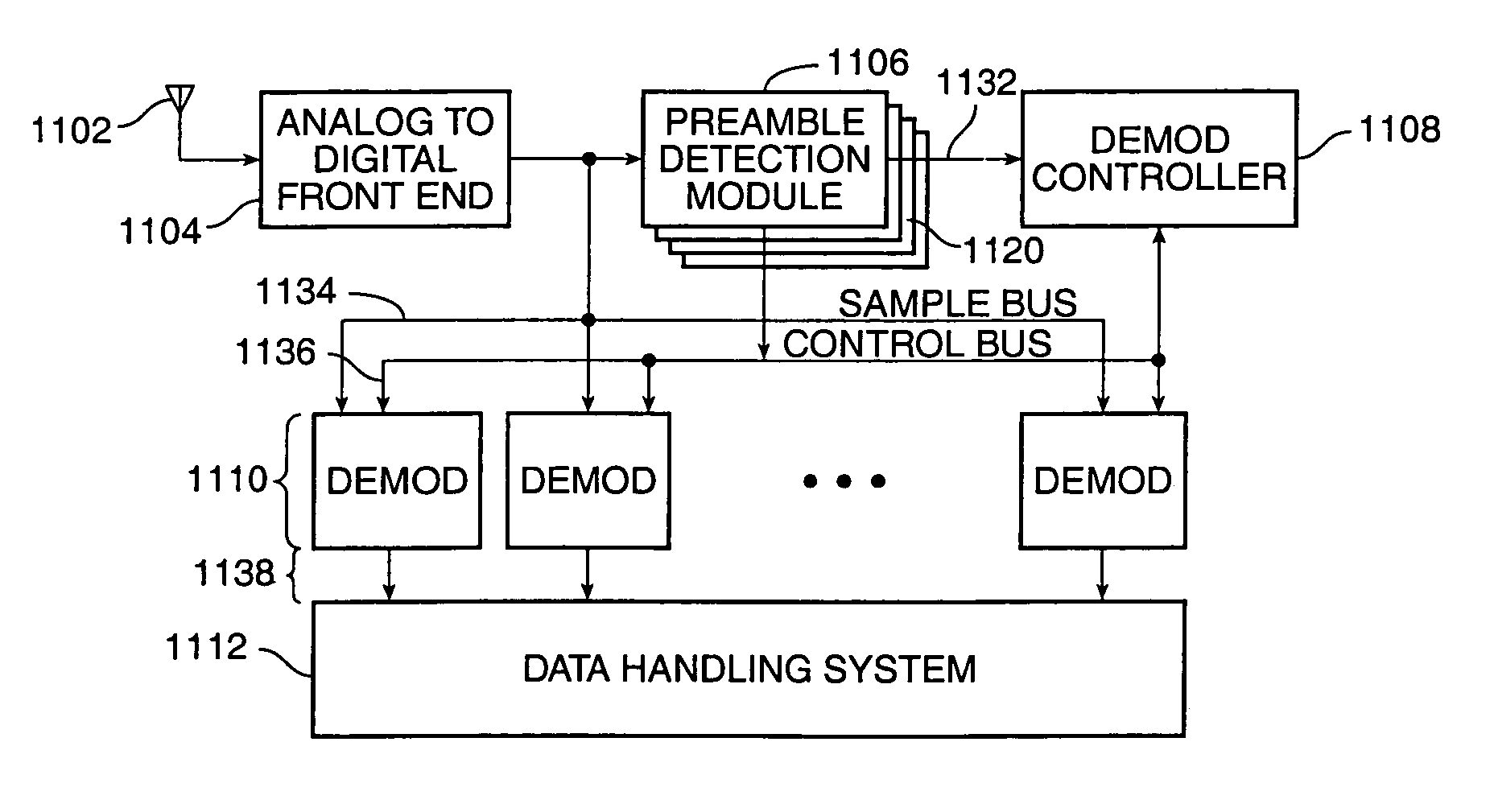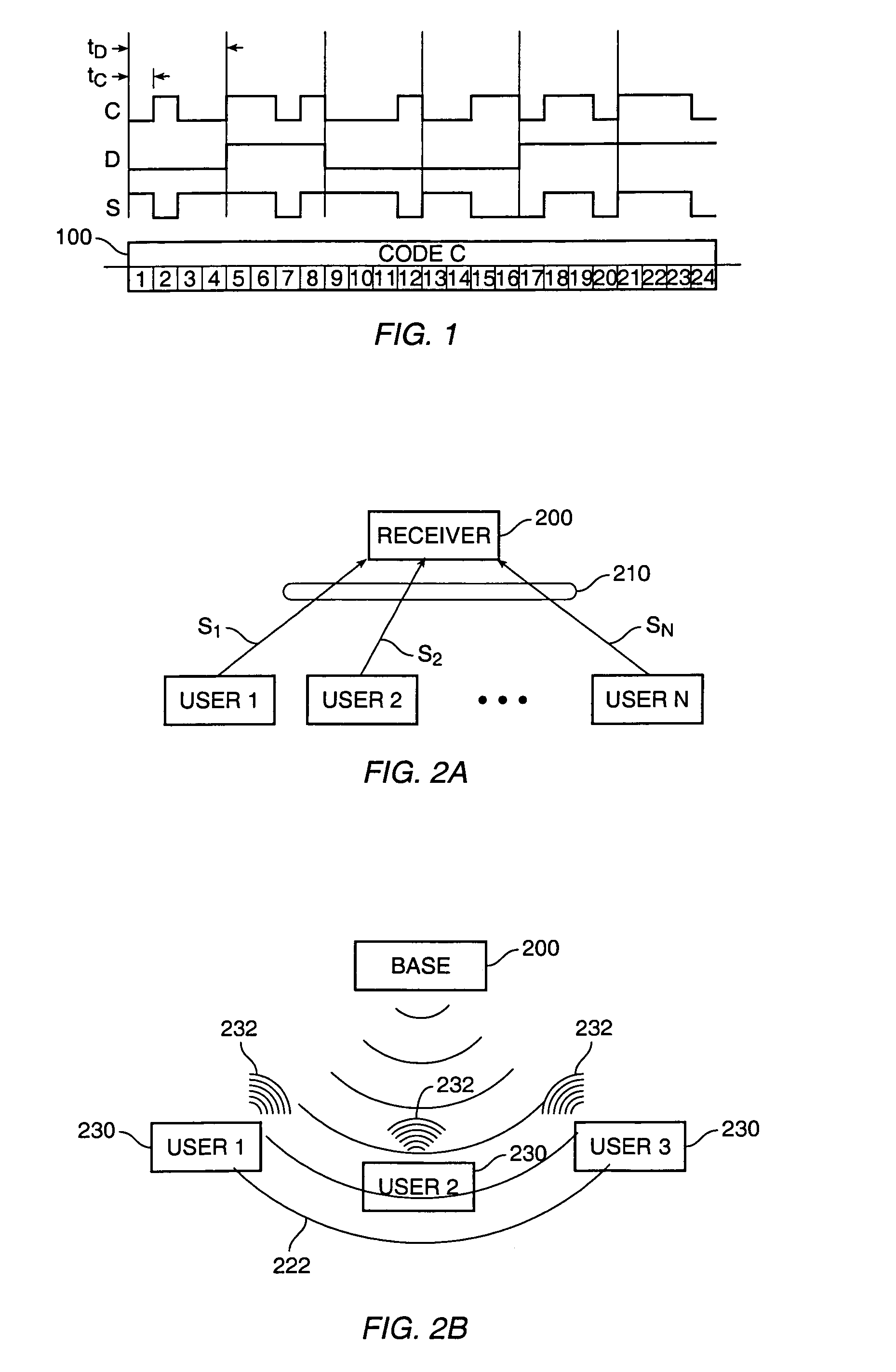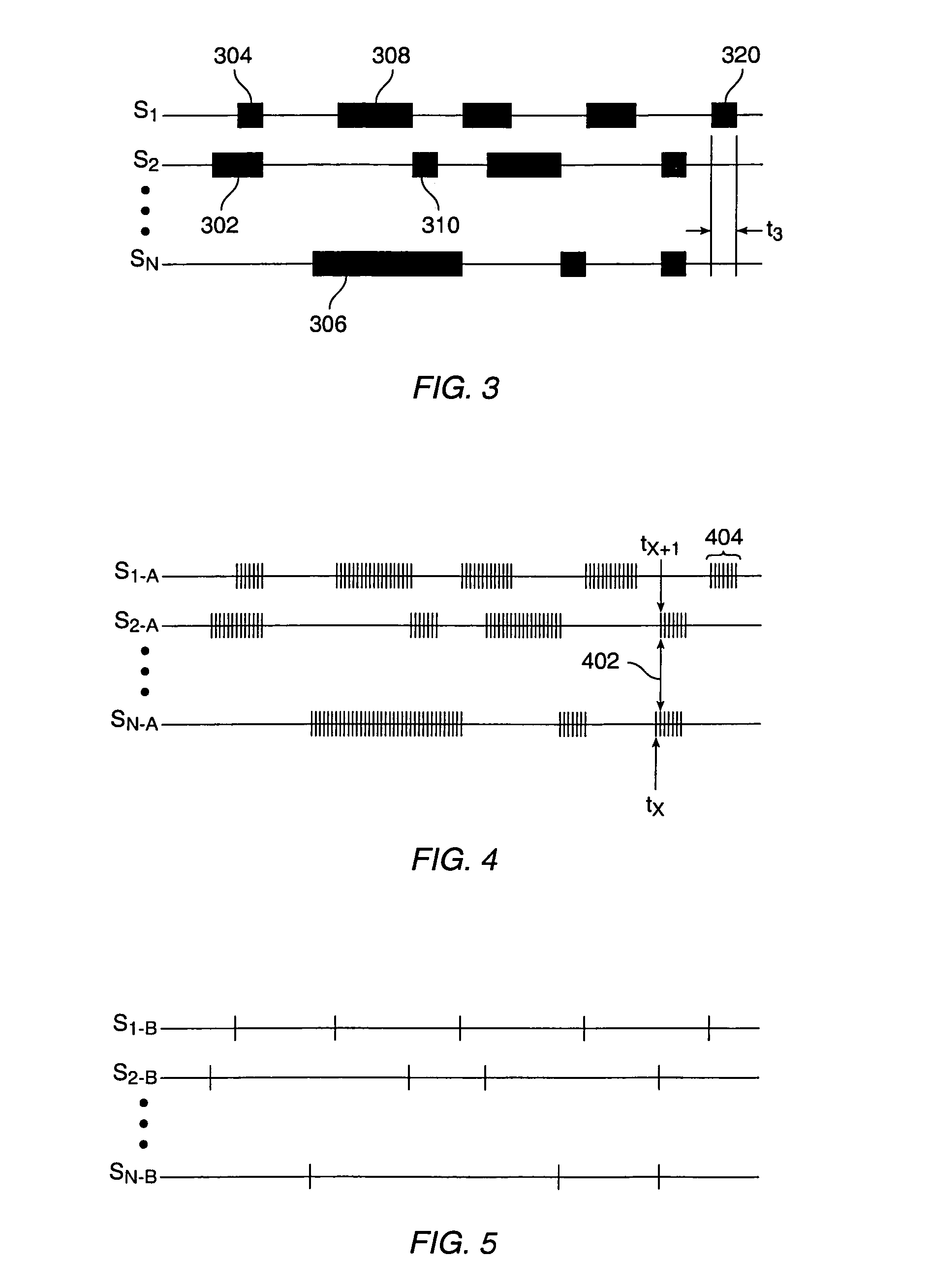Method and apparatus for multiple access over a communication channel
a communication channel and channel technology, applied in the field of communication techniques, can solve the problem that the noise floor of the narrow band receiver only slightly increases the spectrum signal, and achieve the effects of reducing the complexity of the acquisition implementation system, improving the collision performance of multiple accesses, and efficient processing
- Summary
- Abstract
- Description
- Claims
- Application Information
AI Technical Summary
Benefits of technology
Problems solved by technology
Method used
Image
Examples
Embodiment Construction
[0034]FIG. 2a shows a typical environment in which the present invention operates. As shown in the figure, a large number of users 1, 2, . . . N broadcast to a common multi-user receiver 200. The receiver demodulates all of the signals S1, S2, . . . SN received on the single multiple access channel 210, it being understood that each signal Sx occupies the same frequency range as the other signals. A property of this environment is that there is no synchronized coordination among the users and no time synchronization between each user 1, 2 . . . N and the receiver 200. Each user transmits independently of the other and asynchronously, in bursts based on its offered traffic. Consequently, there will be inevitable periods of time when two or more users are transmitting their signals to the receiver 200 simultaneously.
[0035]Refer now to the traffic model of FIG. 3 which illustrates a typical pattern of transmission activity on a standard multiple access channel. The signals from the var...
PUM
 Login to View More
Login to View More Abstract
Description
Claims
Application Information
 Login to View More
Login to View More - R&D
- Intellectual Property
- Life Sciences
- Materials
- Tech Scout
- Unparalleled Data Quality
- Higher Quality Content
- 60% Fewer Hallucinations
Browse by: Latest US Patents, China's latest patents, Technical Efficacy Thesaurus, Application Domain, Technology Topic, Popular Technical Reports.
© 2025 PatSnap. All rights reserved.Legal|Privacy policy|Modern Slavery Act Transparency Statement|Sitemap|About US| Contact US: help@patsnap.com



